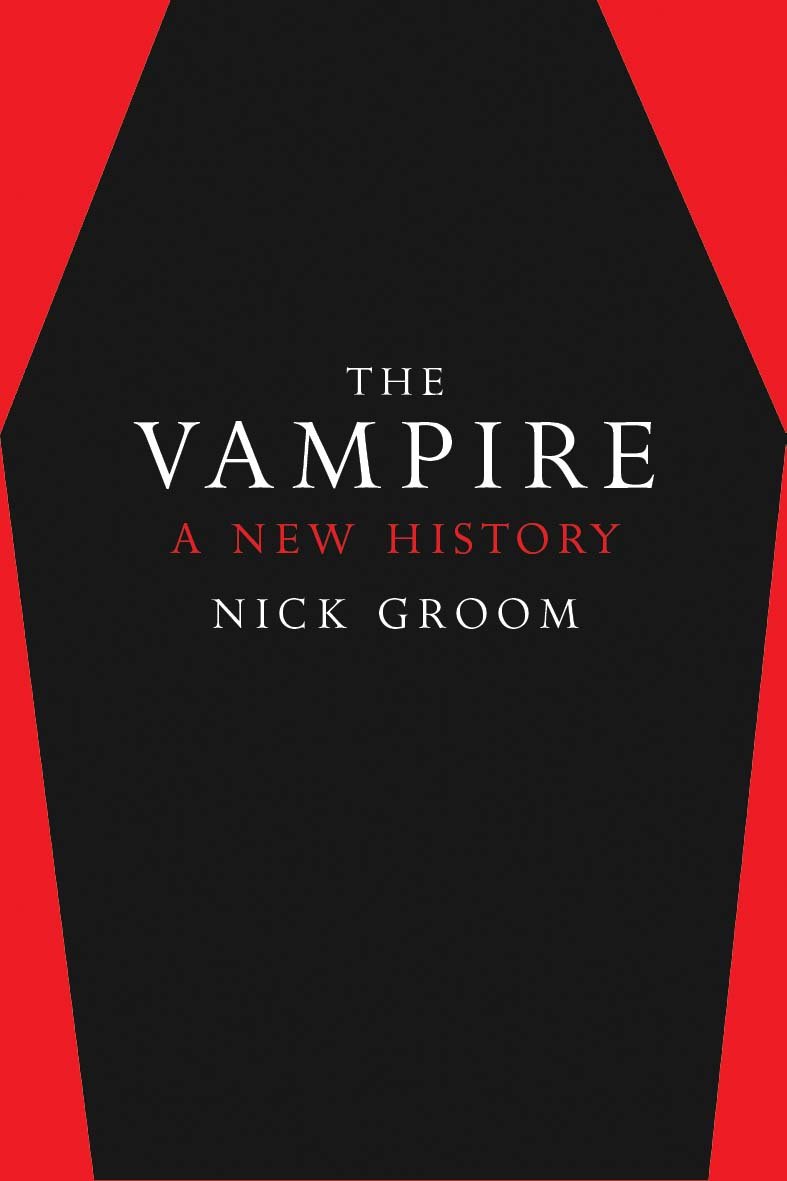The Vampire
A New History
by Nick Groom
Yale, 287 pp., $25
“Now you know what we are. Now you know what you are. You’ll never grow old, Michael. And you’ll never die. But you must feed.” So Kiefer Sutherland tells Jason Patric in The Lost Boys, the 1987 movie about a roving gang of teenage vampires. I remember watching the scene in a college literature class, as a classmate tearfully explained how this movie—and vampires generally—helped her cope with her grandmother’s death.
Sutherland’s description of the way of the vampire could also describe the presence of vampire stories in our culture. Whether as a folkloric figure, an archetype, or a character, the vampire has been around for centuries, adapting to all manner of social change. It is a specter of disease, a manifestation of sin, an icon of romantic decadence, a stand-in for the exotic or unsettling Other, a substitute for existential malaise, or all of the above. The transmutation of the vampire over time tells us as much about human history as those studies where decline precedes the fall and where the dead stay that way.
A historical subject so long and complicated requires proper handling, and few writers seem more qualified than Nick Groom, author of The Vampire: A New History. A professor of English at the University of Exeter, Groom has built a reputation as the “prof of Goth.” He wrote a volume on The Gothic for Oxford’s “Very Short Introduction” series and has contributed introductory essays to recent Oxford editions of such Gothic literary classics as The Castle of Otranto and Frankenstein. He also put out an edition of a four-volume collection of records of 18th-century crimes (The Bloody Register), and has written essays on Nick Cave.
“Vampires,” Groom writes, “are enmeshments of history that escape their internment to reveal deeper histories—histories more complex, more disturbing, more dangerous and more present.” His “new history” is new in that he has largely focused it on the vampire in the centuries before the publication of Dracula, so that Bram Stoker’s 1897 book arrives climactically near the ending of Groom’s account.
The vampire emerged as a folk creature in Eastern Europe—for instance in Serbia, where, in the 14th century, the emperor Stefan Dusan forbade exhuming people believed to be undead. According to the relevant law:

Groom argues that the vampire as we know it emerged fully only during the Enlightenment, when new scholarship and curiosity, rather than explaining away the vampire, only made it more concrete. An outbreak of dysentery was blamed on vampires, resulting in mass exhumations, in which corpses were impaled, decapitated, and dismembered. Some thought vampirism was an effect of heavy opium use. Treatises and dissertations on vampirism spread throughout Europe’s nascent and controversial medical profession. “From 1730 to 1735,” wrote Gilles Deleuze and Félix Guattari in their 1980 book A Thousand Plateaus, “all we hear about are vampires.” While this is an exaggeration, it’s true that prominent figures, including theologians and philosophers, were giving a lot of thought to vampire matters. Pope Benedict XIV was a skeptic. King George II was a believer. Rousseau did not believe and found the fixation on vampires by government, military, medicine, and the church troubling.
Soon vampire imagery became common among intellectuals: Voltaire, Marx, and Engels were fond of deploying vampiric metaphor in their polemics. Goethe and Coleridge wrote vampiric poems. Could thinking about vampires help us to better understand the nature of the artistic transgression of the avant-garde, or the seeming inhuman monstrosity of mass murderers? Groom suggests it could.
The culmination of all this is Stoker’s novel, which marks the moment, Groom says, when the vampire becomes “universalized”: “Indeed, it is no exaggeration to suggest that vampirology ‘After Dracula’ (AD) will never fully escape the clutches of Stoker’s iconic text.” Stoker researched and revised Dracula for years, picking and choosing from among the stories, debates, and incidents of hysteria that occurred in the earlier periods Groom covers.
Groom’s bringing us up to speed on everything BD is a vast undertaking—a tapestry of history, science, pseudoscience, theology, politics, and art. It’s complex but, if you’ll pardon the pun, a bit bloodless in presentation. He sometimes gives signs of enjoying his subject, and occasionally his prose is even decadent (for example: “Cholera was a terrible disease. In stark contrast to aesthetically attractive and languorous…illnesses such as typhoid and tuberculosis”). Overall, though, Groom’s approach is more Prof than Goth.
Yet in Groom’s careful assemblage of data, The Vampire presents us with a creature that is as much necessary as it is feared. Necessary, of course, because even rational terrors are too overwhelming to contemplate on their own.





